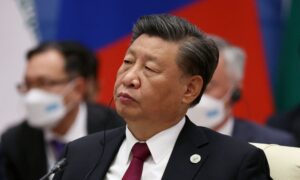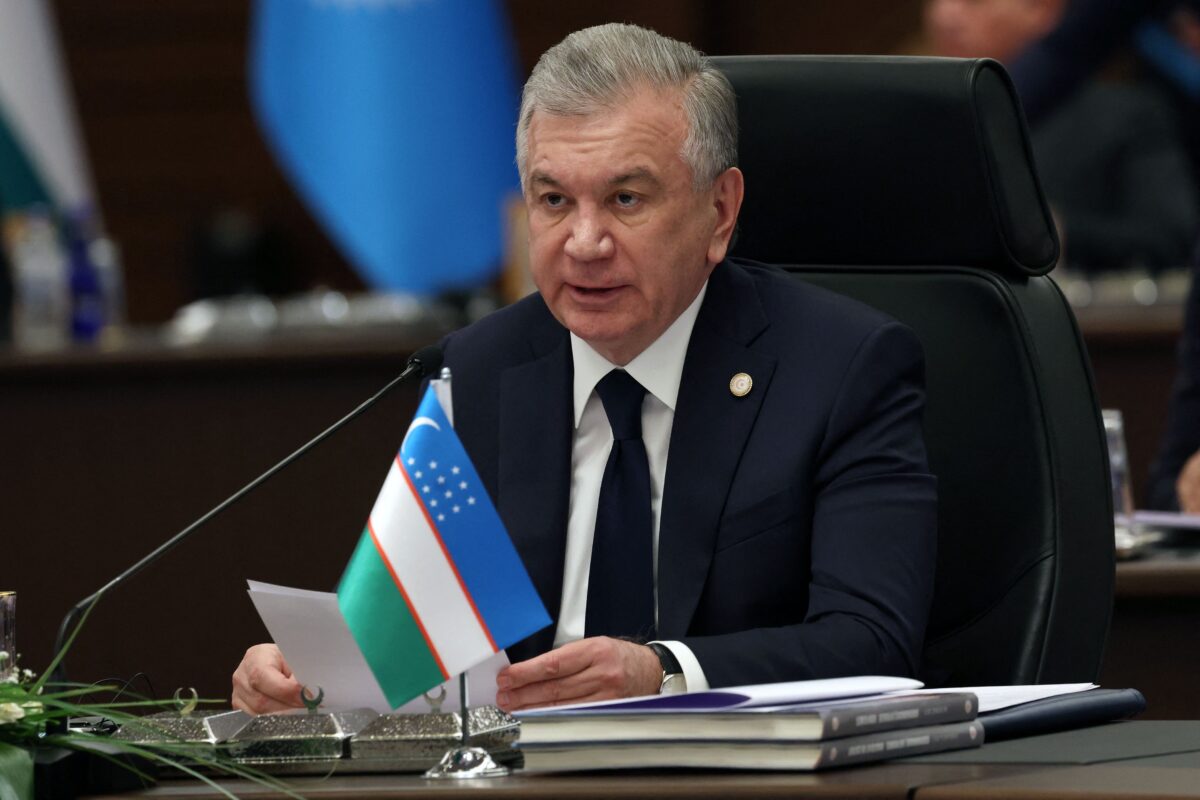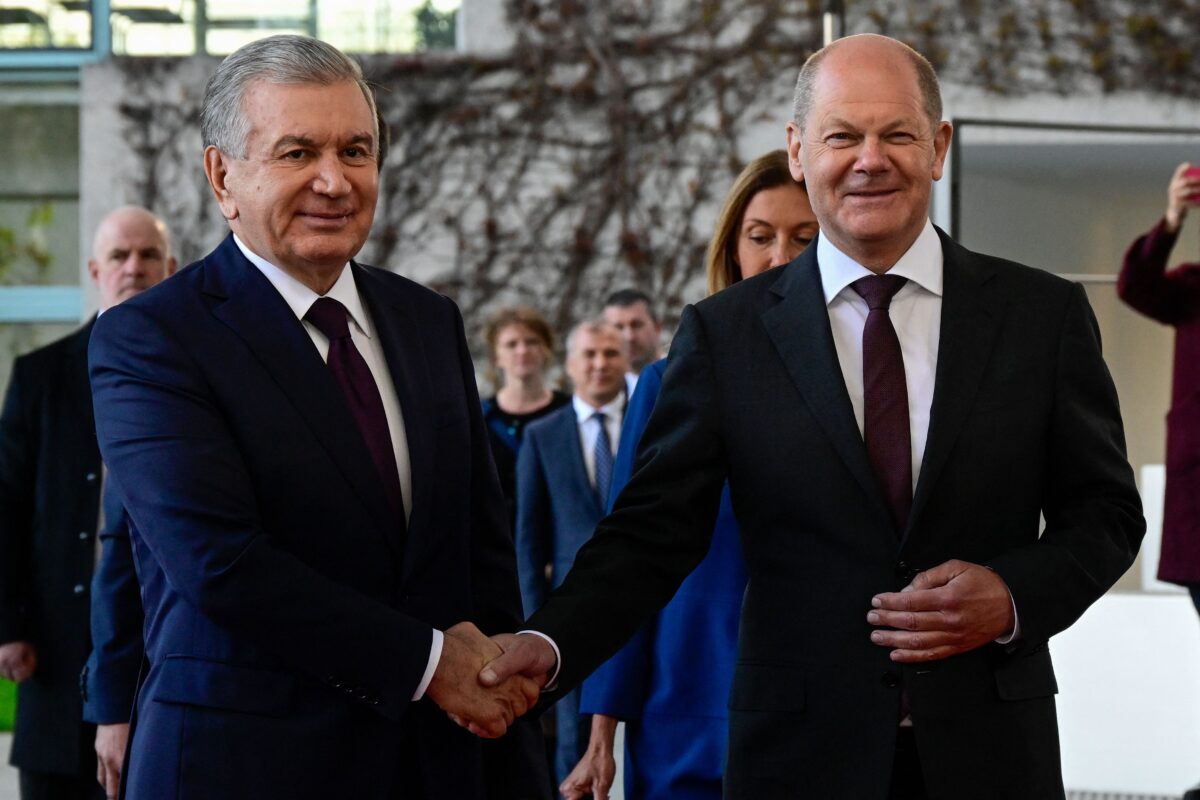The New Global Battlefield: Eurasia’s Reemerging Heartland
Commentary Leaders of Central Asia’s five independent states will meet with Chinese leader Xi Jinping for a critical summit on May 18–19 in China’s Xi’an city. The five states are Kazakhstan, Kyrgyzstan, Tajikistan, Uzbekistan, and Turkmenistan. It is critical because Xi recognizes that Central Asia holds the key to the survival of China and the China-Russia-Iran alliance. It is equally critical for the West because the Central Asian states, plus Azerbaijan, represent a pro-Western bloc, which cleaves through the heart of the Russia-China-Iran power bloc. Xi formally invited Kazakhstan President Kassym-Jomart Tokayev, Kyrgyzstan President Sadyr Japarov, Tajikistan President Emomali Rahmon, and Uzbekistan President Shavkat Mirziyoyev. They will pay state visits—the highest diplomatic form of visit—to China from May 16 to 20. Of these, Mirziyoyev represents more than half the Central Asian population, and he is also the leader who has shaped the distinctly independent grouping of states that have respected but stood at arm’s length from the dominant powers of Central Asia for the past century and more: Russia and China. This made Uzbekistan’s April 30 referendum approve sweeping changes to the national constitution—a key to the control of the Eurasian heartland. It has led to Uzbekistan calling new presidential elections for July 9, which will certainly return the overwhelmingly popular Mirziyoyev, who is on track to defend the independence that the Central Asian khanates have regained since the collapse of Soviet communism in 1991. The April 30 Uzbek referendum was a move little understood by the outside world. Still, it was another delicate but critical move in an area so marked by contradictory nuance that the referendum should be seen as a milestone in determining the emerging strategic architecture. British geographer Sir Halford Mackinder in 1904 had popularized the theory that “Who rules East Europe commands the Heartland; who rules the Heartland commands the World-Island; who rules the World-Island commands the world.” The pivot area of the world-island’s heartland, he stated, was Central Asia. Today, the bloc of Central Asian states—all former khanates and territories controlled for more than a century by the Russian and then the Soviet state—now divide the continent between the People’s Republic of China (PRC) and the Russian Federation. These landlocked states, determined in their desire to find trade routes that do not involve either the PRC or Russia, are becoming increasingly cohesive, despite a history of border disputes. And they have all become more cooperative since Mirziyoyev, the former prime minister of Uzbekistan, took over when President Islam Karimov died, and the Uzbekistan economy and political structure suddenly broke out of the inefficient and corrupt neo-Soviet economy over which Karimov had presided since 1991 when the USSR collapsed. But Mirziyoyev not only began making the Uzbekistan economy and polity more open and stable, but he also began working with his four neighboring Central Asian states—Kazakhstan, Kyrgyzstan, Tajikistan, and Turkmenistan—in opening borders and negotiating a calming of border disagreements. President of Uzbekistan Shavkat Mirziyoyev speaks during an Extraordinary Summit of the Heads of State of the Organization of Turkic States (OTS), in Ankara, Turkey, on March 16, 2023. (Adem Altan/AFP via Getty Images) Only President Askar Akayev (who served from 1990 to 2005) of the Kyrgyz Republic matched Mirziyoyev in a commitment to building a stable bloc of Central Asian democracies until he was removed, largely because he opposed some of the excesses that the U.S. George W. Bush administration sought in its war in Afghanistan, operating extensively from Manas Air Base in Kyrgyzstan. The April 30 constitutional referendum in Uzbekistan (with a population of 35 million) was some years in the making, and offered significant protection to the community in terms of limitations on government powers, improved health and other public services, and increased abilities to make the governmental and economic systems transparent, continuing to erode the old Soviet-era and Karimov-era systemic corruption. The international media was expected to focus on the fact that the new constitution spelled out extended presidential terms of office (from five years to seven years), allowing Mirziyoyev to run for two more terms of office before retiring. But if this was a problem for the Western media, it certainly was not for the Uzbekistan population, which, in a referendum marked by a turnout of 84.54 percent of registered voters, voted 90.21 percent in favor of the package of constitutional reforms. The International Strategic Studies Association (ISSA), which had a team in Uzbekistan monitoring the voting, noted that it was one of the most transparent and cleanest elections it had monitored in more than 50 years of election monitoring. ISSA teams had also monitored t

Commentary
Leaders of Central Asia’s five independent states will meet with Chinese leader Xi Jinping for a critical summit on May 18–19 in China’s Xi’an city.
The five states are Kazakhstan, Kyrgyzstan, Tajikistan, Uzbekistan, and Turkmenistan.
It is critical because Xi recognizes that Central Asia holds the key to the survival of China and the China-Russia-Iran alliance. It is equally critical for the West because the Central Asian states, plus Azerbaijan, represent a pro-Western bloc, which cleaves through the heart of the Russia-China-Iran power bloc.
Xi formally invited Kazakhstan President Kassym-Jomart Tokayev, Kyrgyzstan President Sadyr Japarov, Tajikistan President Emomali Rahmon, and Uzbekistan President Shavkat Mirziyoyev. They will pay state visits—the highest diplomatic form of visit—to China from May 16 to 20.
Of these, Mirziyoyev represents more than half the Central Asian population, and he is also the leader who has shaped the distinctly independent grouping of states that have respected but stood at arm’s length from the dominant powers of Central Asia for the past century and more: Russia and China.
This made Uzbekistan’s April 30 referendum approve sweeping changes to the national constitution—a key to the control of the Eurasian heartland. It has led to Uzbekistan calling new presidential elections for July 9, which will certainly return the overwhelmingly popular Mirziyoyev, who is on track to defend the independence that the Central Asian khanates have regained since the collapse of Soviet communism in 1991.
The April 30 Uzbek referendum was a move little understood by the outside world. Still, it was another delicate but critical move in an area so marked by contradictory nuance that the referendum should be seen as a milestone in determining the emerging strategic architecture.
British geographer Sir Halford Mackinder in 1904 had popularized the theory that “Who rules East Europe commands the Heartland; who rules the Heartland commands the World-Island; who rules the World-Island commands the world.” The pivot area of the world-island’s heartland, he stated, was Central Asia.
Today, the bloc of Central Asian states—all former khanates and territories controlled for more than a century by the Russian and then the Soviet state—now divide the continent between the People’s Republic of China (PRC) and the Russian Federation. These landlocked states, determined in their desire to find trade routes that do not involve either the PRC or Russia, are becoming increasingly cohesive, despite a history of border disputes.
And they have all become more cooperative since Mirziyoyev, the former prime minister of Uzbekistan, took over when President Islam Karimov died, and the Uzbekistan economy and political structure suddenly broke out of the inefficient and corrupt neo-Soviet economy over which Karimov had presided since 1991 when the USSR collapsed. But Mirziyoyev not only began making the Uzbekistan economy and polity more open and stable, but he also began working with his four neighboring Central Asian states—Kazakhstan, Kyrgyzstan, Tajikistan, and Turkmenistan—in opening borders and negotiating a calming of border disagreements.

Only President Askar Akayev (who served from 1990 to 2005) of the Kyrgyz Republic matched Mirziyoyev in a commitment to building a stable bloc of Central Asian democracies until he was removed, largely because he opposed some of the excesses that the U.S. George W. Bush administration sought in its war in Afghanistan, operating extensively from Manas Air Base in Kyrgyzstan.
The April 30 constitutional referendum in Uzbekistan (with a population of 35 million) was some years in the making, and offered significant protection to the community in terms of limitations on government powers, improved health and other public services, and increased abilities to make the governmental and economic systems transparent, continuing to erode the old Soviet-era and Karimov-era systemic corruption. The international media was expected to focus on the fact that the new constitution spelled out extended presidential terms of office (from five years to seven years), allowing Mirziyoyev to run for two more terms of office before retiring.
But if this was a problem for the Western media, it certainly was not for the Uzbekistan population, which, in a referendum marked by a turnout of 84.54 percent of registered voters, voted 90.21 percent in favor of the package of constitutional reforms. The International Strategic Studies Association (ISSA), which had a team in Uzbekistan monitoring the voting, noted that it was one of the most transparent and cleanest elections it had monitored in more than 50 years of election monitoring. ISSA teams had also monitored two previous national elections in Uzbekistan.
The significant strategic outcome of the referendum was that it showed that the Uzbek people were increasingly recapturing control of their national identity, or identities, and achieving a true social contract between governed and governors for the first time since Tsarist Russia invaded and seized control of the region’s khanates in the late 19th century. Three major population centers of the Uzbek khanates—Tashkent, Kokand, and Samarqand (Samarkand)—were captured in 1865, 1876, and 1868, respectively. The Autonomous Republic of Karakalpakstan (Qaraqalpaqstan), which occupies the northwestern part of Uzbekistan (including the major part of the now mostly-dry Aral Sea, once known as the Lake of Khwarazm), was ceded to the Russian Empire by the khanate of Khiva (also in modern Uzbekistan) in 1873.
And it was in Karakalpakstan where the new constitutional proposals were put to the test. The original proposal for the changes would have removed the autonomous status of Karakalpakstan—the historical land of Khwarazm, which in Persian literature was known as Kat (Kath)—and ended its right to secede from Uzbekistan. The land was incorporated into Soviet Uzbekistan in 1932.
Indeed, in post-Soviet times, there had never been any visible secessionist tendencies in the Autonomous Republic. Still, the right to its autonomy was nonetheless fiercely guarded by the 2 million Karakalpaks, who speak their own Turkic dialect. In July 2022, almost a year before the referendum, Karakalpaks in the regional capital, Nukus, and elsewhere engaged in vigorous street protests about the suggested removal of the Republic’s autonomous status.
The central Uzbekistan government immediately withdrew the proposal from the new constitution and prosecuted several police officers who had attempted to stop the street protests. The Karakalpak example showed how extensively the changes were “field tested” before being incorporated into the new constitution and how much grassroots input was made into the document. And when it was finally drafted, a series of educational campaigns were made into the electorate, over several months, by various civil society organizations, particularly the national Yukshalish independent monitoring group, to educate voters.
The enthusiasm—even among the opposition political parties—for the changes was palpable in all direct contacts that the ISSA had in the lead-up and conduct of the polls.
This now gives Mirziyoyev a clear mandate to continue the development of the strategic bloc of Central Asian states with his four colleagues in the neighboring states. They had already achieved a visa-free travel zone for the rapid movement of people and trade between the five states. Their goals have particularly included the ability, next, to be able to trade with the outside world without having to transit Russia or China.
Mirziyoyev’s two-day working visit to Germany on May 2–3, immediately following the constitutional referendum, was deliberately low-key to avoid any political ramifications with Russia, but it was strategically critical. The visit, and the extensive array of issues discussed, also showed that Mirziyoyev now had, with the overwhelming endorsement of the referendum, the backing to reinforce his diplomatic efforts to build trade with Western Europe.

The president’s discussions with German Chancellor Olaf Scholz and other German officials were comprehensive and addressed ways to improve the trans-Caspian trade corridor. Making the Caspian Corridor viable will necessitate that Mirziyoyev now persuades his fellow leaders in Kazakhstan, possibly Turkmenistan, and Azerbaijan to build a physical infrastructure capable of handling a much larger trade volume. The engagement of the Turkish government would also be critical for this to work well.
It is significant that Germany, in particular, has benefitted from the growing bilateral trade with Uzbekistan in the wake of a decline in U.S. influence in Central Asia following the greatly criticized nature of the U.S. withdrawal of forces from Afghanistan in August 2021. However, it is clear that the Uzbekistan government has also stepped up its commitment to expanding trade and investment relations with the United States. But it may be Germany that proves to be the key ally in sponsoring Uzbekistan’s membership of the World Trade Organization.
The five core Central Asian states have a combined population of some 70 million, of which half are in Uzbekistan. The combined gross domestic products of the five, in 2021, were only $328.87 billion, $197.11 billion of which was with energy-rich Kazakhstan. Industrially and agriculturally, however, the growth area is Uzbekistan.
What, then, are some of the major strategic factors challenging the Central Asian states?
- Creating stable, defensible, and substantial logistical lines and infrastructure within the landlocked Central Asian states and then to the outside world without transiting Russia or China.
- Limiting political pressure from Russia and China, particularly pressures that could disrupt the unity of the five core nations of Central Asia.
- Creating common security approaches, architecture, training, intelligence sharing, and materiel among the core Central Asian states while ensuring an absence of provocation to Russia and China.
- Addressing regional water imbalances, particularly through diplomacy with Afghanistan on the judicious sharing of the Amu Darya (Oxus) River.
- Building structured relations with critical transit or potentially allied nations, now and for the future, including Azerbaijan and Turkey; Afghanistan and Pakistan; Iran; and Mongolia, while assessing the prospect of a future Indo-Pakistan conflict impacting Central Asia’s export routes.
It is probable that Uzbekistan, in particular, and the Central Asian bloc in general, will need to consider how to engage Afghanistan, Pakistan, Azerbaijan, and Turkey as active partners in the logistical framework that will determine a broader architecture of mutual prosperity.
The old intellectual constraint—the reality that the 19th-century Tsarist conquest of Central Asia isolated those states from, say, Afghanistan and Pakistan (and Iran, itself divided by Russian predations)—means that Central Asian and external observers will need to look afresh at what constitutes a broader vision of the Central Asian strategic region.
Views expressed in this article are the opinions of the author and do not necessarily reflect the views of The Epoch Times.












